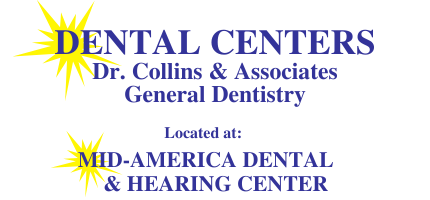Our Dental Blog

How Do I Know If I Have A Cavity?
Sometimes you don’t even need a visit to your family dentist to know you have a cavity. You can see it, feel it, and sometimes even taste it. Yet, there are times when you have a cavity and are not aware until your family dentist does a clinical exam or takes x-rays. This is one of the top reasons why it is important to keep up to date with dental visits, so that if you have a small cavity, it can be diagnosed and treated early. Many people still wonder, is there a way to know they have a cavity if they have not visited the dentist in a while. While going to the dentist is the most effective way to get your teeth checked, there are numerous indications that you may have a cavity and need a dental visit for a restoration.
1. Toothache
If you experience a throbbing feeling while sleeping or pain when you bite into food, there is a good chance you may have tooth decay. A toothache is one of the top indicators of a cavity because once decay spreads into the dentin or pulp area of a tooth, it causes sensitivity to temperature changes and discomfort.
Tooth decay is so common that the Center for Disease Control lists tooth decay as an infectious disease. The American Association of Pediatric Dentistry lists tooth decay as the most common chronic disease and cause for children missing school and parents missing work. Therefore, if you experience a dull or sharp pain in your tooth, it is best to have it checked by your dentist. Waiting until a toothache gets worse can only create a more uncomfortable and expensive dental treatment as small cavities require smaller fillings and larger cavities sometimes need dental crowns or root canal treatment.
2. Color Change Of Tooth
Teeth come in many shades of white – some are brighter than others, but if you notice a color change in your tooth, it could be a sign of a cavity. Colors that typically indicate tooth decay are a brown, yellow, or black appearance. If you have poor oral hygiene, your teeth may appear yellow because of sticky plaque that can adhere to teeth. A color change in teeth is worth a call to your dentist for a professional cleaning and exam.
3. Holes In Your Teeth
If you look in the mirror and notice small (or large) holes in your teeth, this is likely a cavity. Many people often think if they see holes in their teeth or notice a hole after biting into hard food that a piece of tooth broke off. The truth is most of the time when there are holes or teeth break from chewing it is because there is tooth decay which has weakened the tooth.
Holes can also be noticed when you floss, and it gets caught. If food typically gets caught between teeth, there may be a hole trapping food and plaque debris. This is important to get checked out, so food does not become more entrapped and cause larger cavities and gum problems.
4. Bad Breath
If you’re brushing and flossing but still notice a bad taste in your mouth, you may have a cavity. When there is persistent bad taste in your mouth it is a good indicator of a dental infection. There are other dental conditions associated with bad breath like dry mouth and bacterial build-up on the tongue, but there is a good chance you have tooth decay.
5. Sensitivity
Some people have more sensitive teeth than others, but in general, your teeth should not hurt when eating or drinking hot or cold foods and beverages. If you notice your teeth are extremely sensitive when biting down or to cold air, make an appointment with your dentist to ensure there is no cavity.
It is also a good idea to get a dental check-up from your family dentist prior to whitening your teeth or doing any orthodontic treatment to make sure you’re free from tooth decay because it can cause further problems and sensitivity.
6. Swelling Or Pus
If you notice a small pimple at your gum line or pus exuding from your tooth area, this is a sign of a severe dental infection. It could be a sign of tooth decay that extended to the pulp of the tooth and is now abscessed. Pus is not something you should ignore. Your family dentist may need to prescribe an antibiotic and do a root canal to save your natural tooth from being extracted.
7. A Professional Dental Exam
The best way for you to know if you have a cavity is to visit your dentist bi-yearly for a professional cleaning and exam. Your dentist examines your teeth with dental tools that can feel small cavities and sometimes x-rays are necessary to examine between the teeth. There are many instances where tooth decay is not noticeable without x-rays until it becomes more severe. This is one of the top reasons dentists use x-rays to ensure there is no decay hiding between teeth. It also allows the dentist to assess how big a cavity is and if it requires a filling or a larger restoration like a dental crown.
You may know you have a cavity if you have a sharp pain when eating or drinking or see a color change of your tooth. There are some simple indicators that you can use at home to know if you have a cavity, but if you suspect you may have tooth decay without strong symptoms, it is wise to make a quick dental visit with your family dentist. It is always more affordable and more comfortable to get cavities filled when they are small. It may help you remember to brush and floss regularly when you know that the larger the cavity, the greater the time in the dental chair!
Blog Archive
